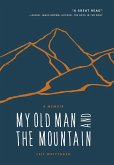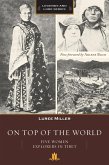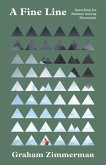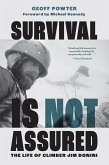. Ang Tharkay was the sirdar for Maurice Herzog's Annapurna expedition in 1950-the first 8000-meter peak to be climbed
. Ang Tharkay was a key member of the 1951 reconnaissance of Everest-which led to the successful 1953 ascent
Sherpas have recently been in the public eye, in part because of the 2013 Everest "brawl," the 2014 avalanche that took the lives of thirteen climbing Sherpas, and the 2015 earthquake that devastated Nepal. These events and others have led to much public discussion about how Sherpas today are treated and viewed by their Western employers. Sherpa expands our understanding of these issues by providing historical context.
The autobiography of Ang Tharkay, who was born in 1908 and became one of the most renowned Sherpas of early Himalayan exploration, has long been a collector's item in the original French-language edition but it has never been available in English until now.
In Sherpa, Tharkay describes his experiences traveling with Eric Shipton and H.W. Tilman and as the sirdar (head Sherpa) on Maurice Herzog's 1950 ascent of Annapurna. Few such Sherpa accounts have been written, and fewer still from these early Himalayan expeditions. Opening with a brief account of Tharkay's childhood and background, Sherpa then immerses readers in expeditions on Everest, Nanga Parbat, and, of course, Annapurna. Tharkay reveals some of the politics within the Sherpa support teams: petty arguments and shared struggles that went unnoticed or at least unrecorded by those who hired them. Tharkay's admiration of his employers is leavened with his recognition of their shortcomings, but his affection for the climbers who employed him, and theirs for him, radiates throughout the story.
Sherpa includes an original foreword by Tashi Sherpa, founder of Sherpa Adventure Gear and the nephew of Ang Tharkay. He remembers how he and his young cousins worshipped "Agu" (Uncle) as a respected mountaineer and hero, a warm and safe presence for the family.
. Ang Tharkay was a key member of the 1951 reconnaissance of Everest-which led to the successful 1953 ascent
Sherpas have recently been in the public eye, in part because of the 2013 Everest "brawl," the 2014 avalanche that took the lives of thirteen climbing Sherpas, and the 2015 earthquake that devastated Nepal. These events and others have led to much public discussion about how Sherpas today are treated and viewed by their Western employers. Sherpa expands our understanding of these issues by providing historical context.
The autobiography of Ang Tharkay, who was born in 1908 and became one of the most renowned Sherpas of early Himalayan exploration, has long been a collector's item in the original French-language edition but it has never been available in English until now.
In Sherpa, Tharkay describes his experiences traveling with Eric Shipton and H.W. Tilman and as the sirdar (head Sherpa) on Maurice Herzog's 1950 ascent of Annapurna. Few such Sherpa accounts have been written, and fewer still from these early Himalayan expeditions. Opening with a brief account of Tharkay's childhood and background, Sherpa then immerses readers in expeditions on Everest, Nanga Parbat, and, of course, Annapurna. Tharkay reveals some of the politics within the Sherpa support teams: petty arguments and shared struggles that went unnoticed or at least unrecorded by those who hired them. Tharkay's admiration of his employers is leavened with his recognition of their shortcomings, but his affection for the climbers who employed him, and theirs for him, radiates throughout the story.
Sherpa includes an original foreword by Tashi Sherpa, founder of Sherpa Adventure Gear and the nephew of Ang Tharkay. He remembers how he and his young cousins worshipped "Agu" (Uncle) as a respected mountaineer and hero, a warm and safe presence for the family.
Dieser Download kann aus rechtlichen Gründen nur mit Rechnungsadresse in A, D ausgeliefert werden.









